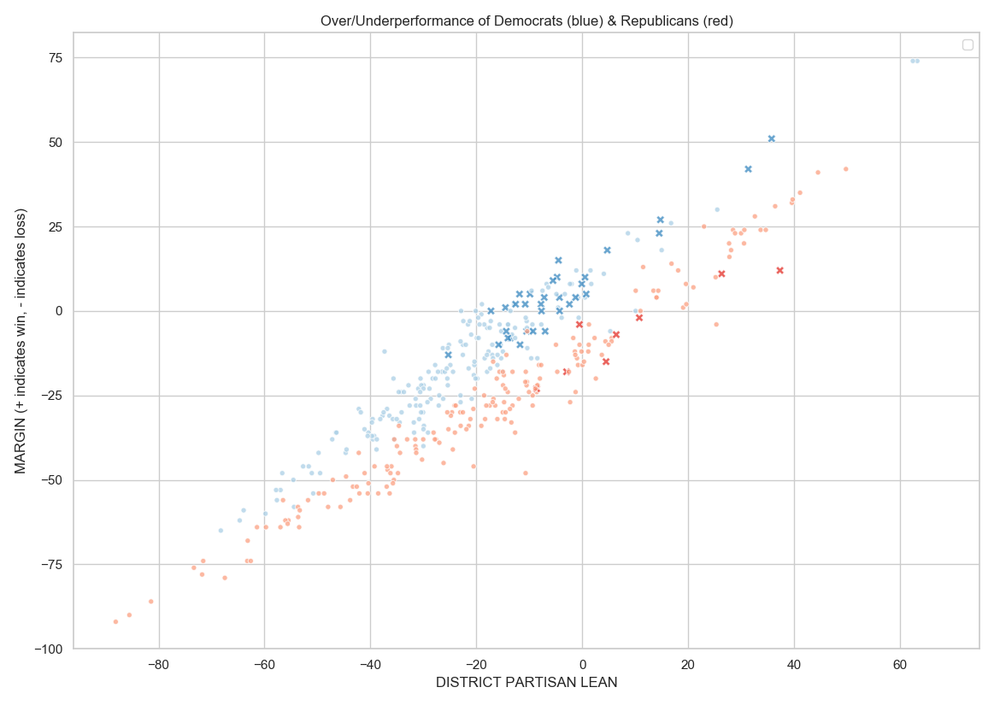2018 Midterms: Was 2018 “the Year of the Woman”? Did candidate gender impact performance?
Democratic women endorsed by Emily’s List & Republican women endorsed by Susan B. Anthony List
Among candidates for U.S. House seats in the 2018 general elections:
-
Emily-endorsed Democratic women meaningfully overperformed other members of their party, and -
Susan-endorsed Republican women well underperformed other members of their party.
Democrats overperformed (held higher voteshare margins) and Republicans underperformed (held lower voteshare margins) relative to the partisan leans of the districts they ran in.
xare women candidates endorsed by the named organizationsoare all other Democrats (blue) and Republicans (red).
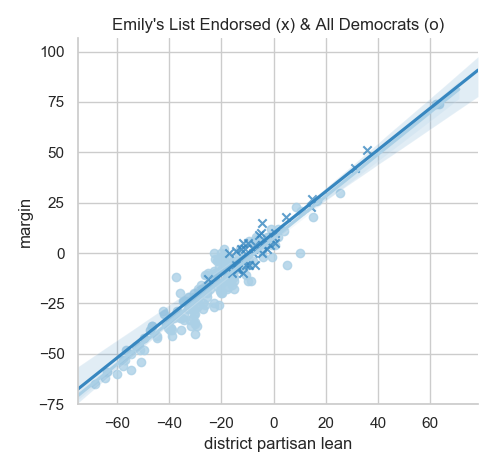 |
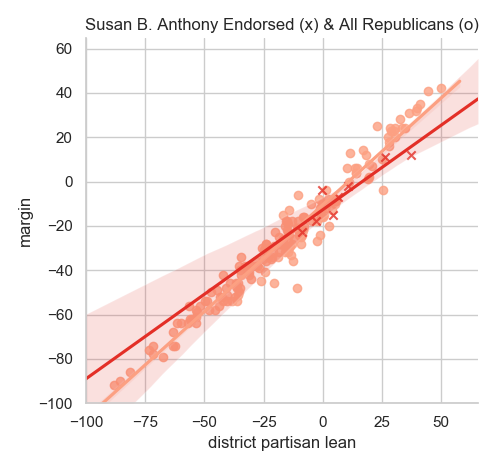 |
Neither dataset I used has candidates’ genders, so I compared Democratic candidates endorsed by Emily’s List (Emily Endorsed?) and Republican candidates endorsed by the Susan B. Anthony List (Susan B. Anthony Endorsed?). Both organizations endorse only women, but not all women from their preferred parties, so this method is only a very approximate proxy for candidate gender. Plenty of women candidates were endorsed by neither organization.
Republicans
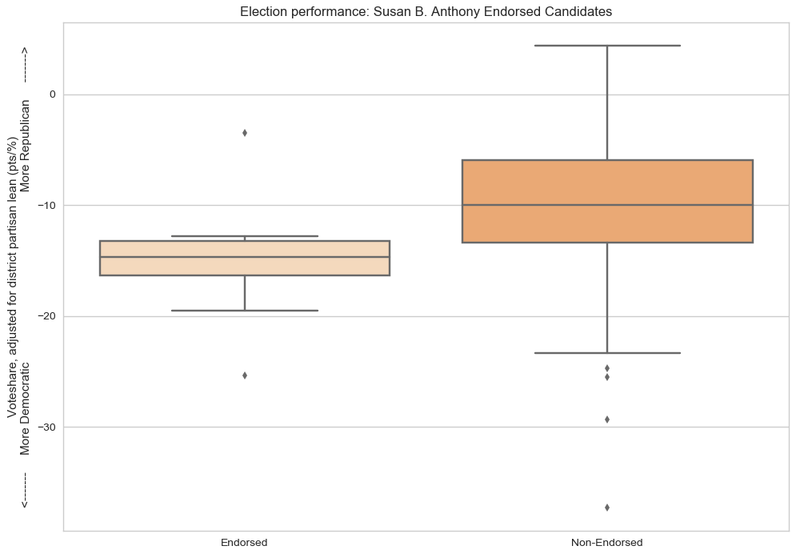 |
Susan-endorsed candidates performed poorly - the effect is statistically significant despite the very small sample size (n = 8) |
| Group | Performance | n |
|---|---|---|
Susan-endorsed candidates |
-14.9% | 8 |
| All Republican candidates | -9.9% | 181 |
Susan-endorsed Republicans underperformed by -5% (p = 0.018) - compared to Republicans not endorsed by the organization
Democrats
Emily-endorsed candidates far overperformed those not endorsed by the organization |
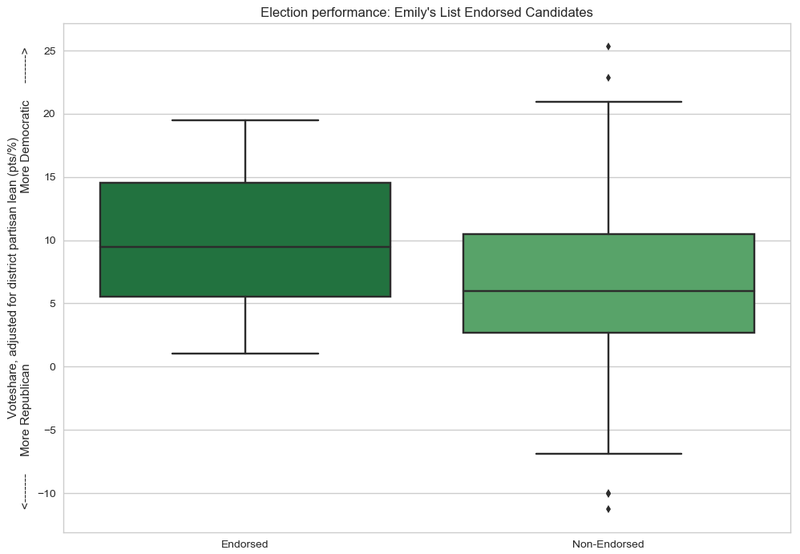 |
| Group | Performance | n |
|---|---|---|
Emily-endorsed candidates |
+9.8% | 33 |
| All Democratic candidates | +6.3% | 176 |
Emily-endorsed Democrats overperformed by +3.5% (p = 0.004) - compared to Democrats not endorsed by the organization
Notes
I used FiveThirtyEight’s dataset on 2018 primary candidates and only included candidates who won their primaries and advanced to their respective general elections. This dataset includes only candidates who had primary challengers. Moreover, I only looked at candidates for U.S. Representative/House seats (no U.S. Senators or state-level candidates).
As the above findings could be caused by several factors, and correlation does not equal causation, one should not draw the conclusion that a Susan endorsement tanked a candidate or that an Emily endorsement helped a candidate to victory. It could also be, for example, that Susan made “riskier” endorsements, perhaps endorsing candidates that were very likely to lose, while Emily made safer endorsements. But still, this is not a conclusion that can be drawn directly from this analysis.
Data Sources
2018 Midterms
2018 Midterms: Did anti-establishment candidates really perform better?
“The Year of the Woman”: Did candidate gender impact electoral performance?
2018 Midterms: Did candidates’ professional background, characteristics, and/or identities affect performance?
U.S. House: Do moderates come from swing districts? Relationship between caucus/coalition membership and district partisan lean
Last Updated: Feb 16, 2019
